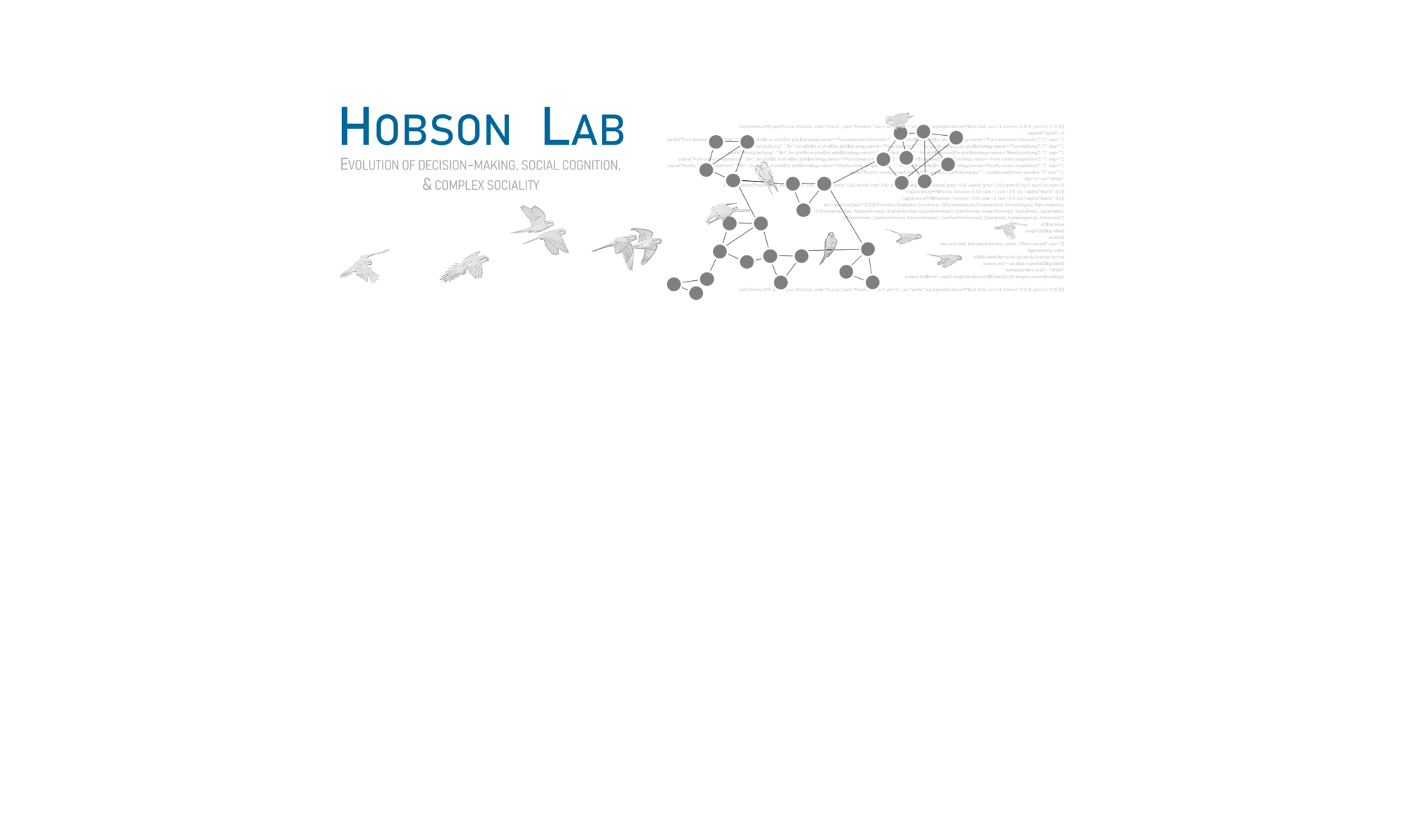Grace has a new paper now out in PLOS Computational Biology!
Individual identity information persists in learned calls of introduced parrot populations
Grace Smith-Vidaurre , Valeria Pérez-Marrufo, Elizabeth A. Hobson, Alejandro Salinas-Melgoza, Timothy F. Wright
Abstract
Animals can actively encode different types of identity information in learned communication signals, such as group membership or individual identity. The social environments in which animals interact may favor different types of information, but whether identity information conveyed in learned signals is robust or responsive to social disruption over short evolutionary timescales is not well understood. We inferred the type of identity information that was most salient in vocal signals by combining computational tools, including supervised machine learning, with a conceptual framework of “hierarchical mapping”, or patterns of relative acoustic convergence across social scales. We used populations of a vocal learning species as a natural experiment to test whether the type of identity information emphasized in learned vocalizations changed in populations that experienced the social disruption of introduction into new parts of the world. We compared the social scales with the most salient identity information among native and introduced range monk parakeet (Myiopsitta monachus) calls recorded in Uruguay and the United States, respectively. We also evaluated whether the identity information emphasized in introduced range calls changed over time. To place our findings in an evolutionary context, we compared our results with another parrot species that exhibits well-established and distinctive regional vocal dialects that are consistent with signaling group identity. We found that both native and introduced range monk parakeet calls displayed the strongest convergence at the individual scale and minimal convergence within sites. We did not identify changes in the strength of acoustic convergence within sites over time in the introduced range calls. These results indicate that the individual identity information in learned vocalizations did not change over short evolutionary timescales in populations that experienced the social disruption of introduction. Our findings point to exciting new research directions about the robustness or responsiveness of communication systems over different evolutionary timescales.
Author summary
In some avian and mammalian lineages, vocal communication partially depends on social learning. Learned vocalizations may carry information important to communicate to others, including individual identity or group membership. The information encoded in learned vocalizations may change under different social conditions, such as the number of individuals available for social interactions. We used populations of monk parakeets introduced to the United States of America as a natural experiment of social disruption. We tested the ideas that the type of identity information encoded in learned vocalizations could either remain the same or change in introduced populations compared to native range populations in Uruguay. Using computational approaches, we quantified patterns of acoustic variation linked to identity information in learned vocalizations of native and introduced range populations. We found that individual identity information was more pronounced than group membership in learned vocalizations in each of the native and introduced ranges. The type of identity information important for monk parakeets to communicate appears to have remained the same despite social disruption that occurred over the last 50 years. While socially learned traits are considered very flexible, our findings suggest that the type of identity information encoded in learned vocalizations can be robust to population disruption over cultural timescales.
Altmetrics





